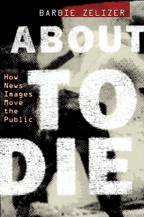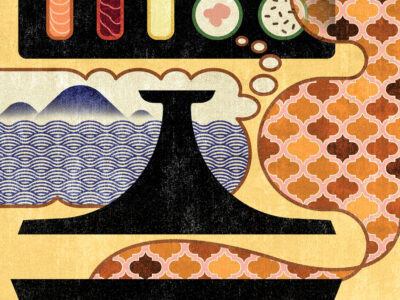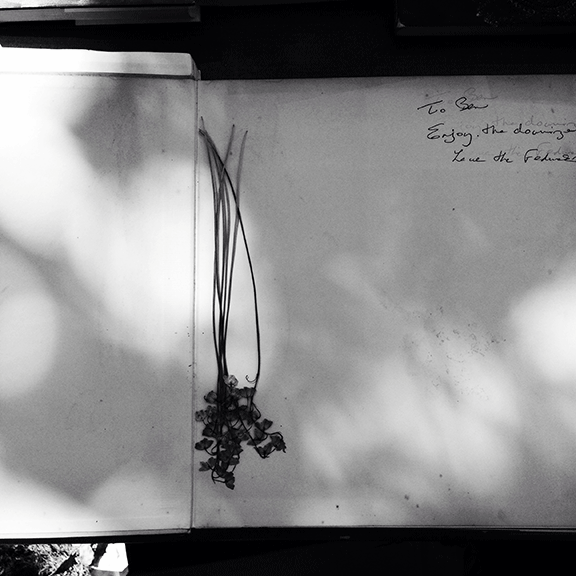
Barbie Zelizer, the Raymond Williams Professor of Communication, began writing About to Die after seeing news coverage of the killing of a 12-year-old during the second Intifada in 2000. But as she reached back into the archives and examined news images of impending death from as early as the 1830s, the work also brought her a personal insight. In retrospect, she says, “I’ve been writing about this moment forever, without really realizing it.”
One of her first books examined the Kennedy assassination. She’s written about the German soldiers who photographed their victims as trophies during the Holocaust. And after 9/11, she says, she was fascinated by “the question of why people who were ‘about to die’ disappeared” from the visual record, and why the World Trade Center towers themselves, rather than the victims, became the defining image of the attack.
It was around that time that she decided to pull back and consider how images of death had cycled through the wider landscape of photojournalism. “I’d never really looked at natural disaster before,” she says. “I hadn’t looked at things like epidemic and illness.” For Zelizer, that moment before death became the perfect entry point into examining the way journalism depicts deeply unsettling events.
In About to Die, Zelizer presents a taxonomy comprising three categories of images. A wide shot of an earthquake-ravaged city shows us “presumed death,” where “people don’t appear, but buildings and structures do” and we can only guess what’s under the rubble. A photograph of one starving child as a representative of famine is the face of “possible death,” as there’s no way to know whether that particular child survived. Finally, images of “certain death” show us individuals we know to have perished.
Journalists “very systematically and very repeatedly” distill complicated events into images of human anguish, Zelizer concluded. “The structural circumstances that surround each one of those deaths … fade into the background,” and what we’re left with is a formulaic and familiar depiction of events that can be, in fact, quite disparate.
Zelizer argues that “there’s a comfort in that formula” and the way it can be recycled across the coverage of so many different forms of disaster. Photographs can perform a therapeutic function, allowing us to work through an event “by bearing witness to the war, or the assassination, or the act of terror.”
A still photo, Zelizer says, “slices a moment in a sequence of action,” and those slices conjure a sense of contingency. “Although we think we know where they go, there’s always that hope that maybe they won’t go there.” For example, she says a common response to images of the Challenger explosion was: “I kept watching, and I kept thinking it’s not going to explode.” Photos aren’t just “rational tools of information relay,” she posits; they’re about engagement on a deeper level, and the process by which we begin to grapple with an emotional aftershock.
Images that appear to depict the moment immediately preceding death “become particularly important at a moment when we need information more than ever,” she says, but they also raise a question. “How much do we need to understand what the photo is showing us? How much visual detail do we actually need to complete the implication of what we’re not shown?”
The proliferation of camera phones—and now, video phones—has made that question more complicated, in the sense that every bystander is now a potential citizen-journalist. Traditional news organizations, rather than producing the images they print or broadcast, are instead left struggling to decide how they’ll present the grainy and often graphic snapshots and videos that flow over the Internet. The decision-making process has been thorny, Zelizer says, because “journalists never figured out sufficiently what a news image is supposed to do.”
In About to Die, Zelizer’s analysis of the coverage of Iranian protestor Neda Agha-Soltan is a case study in this inconsistency. Agha-Soltan was shot during a 2009 protest in Tehran, and the act of violence was captured in a shaky, 40-second cellphone video. The clip exploded across the Internet, but news organizations attempted greater circumspection. As Zelizer writes, “CNN at first blocked out the woman’s face, then withheld her name and ran a pixelated version on-air … before eventually screening the full video.” ABC showed only a few still frames from the sequence, while CBS and NBC went with a heavily edited version of the original video. At the time, one ABC executive’s best explanation was: “We don’t show people on television at the moment of their death.”
Though Zelizer’s book preceded the tsunami in Japan and the ensuing nuclear disaster at the Fukushima reactors, in a few prescient lines she describes the formulaic shots of a meltdown: “the clouds of atomic disaster billow across the horizon framed by the camera’s lens.” Watching the recent coverage, she says it’s no surprise that the dominant image has been the steam rising from those reactor buildings. “Because that’s the way we understand radiation … it’s the visual substitution of contaminated air, contaminated water” for a threat that’s terrifyingly invisible. “So the smoke becomes very symbolic.”
In the end, she says, “these are events needing some kind of depiction, at a moment in which the depiction can’t really give us the event in its whole form.”
—Sean Whiteman LPS’11




